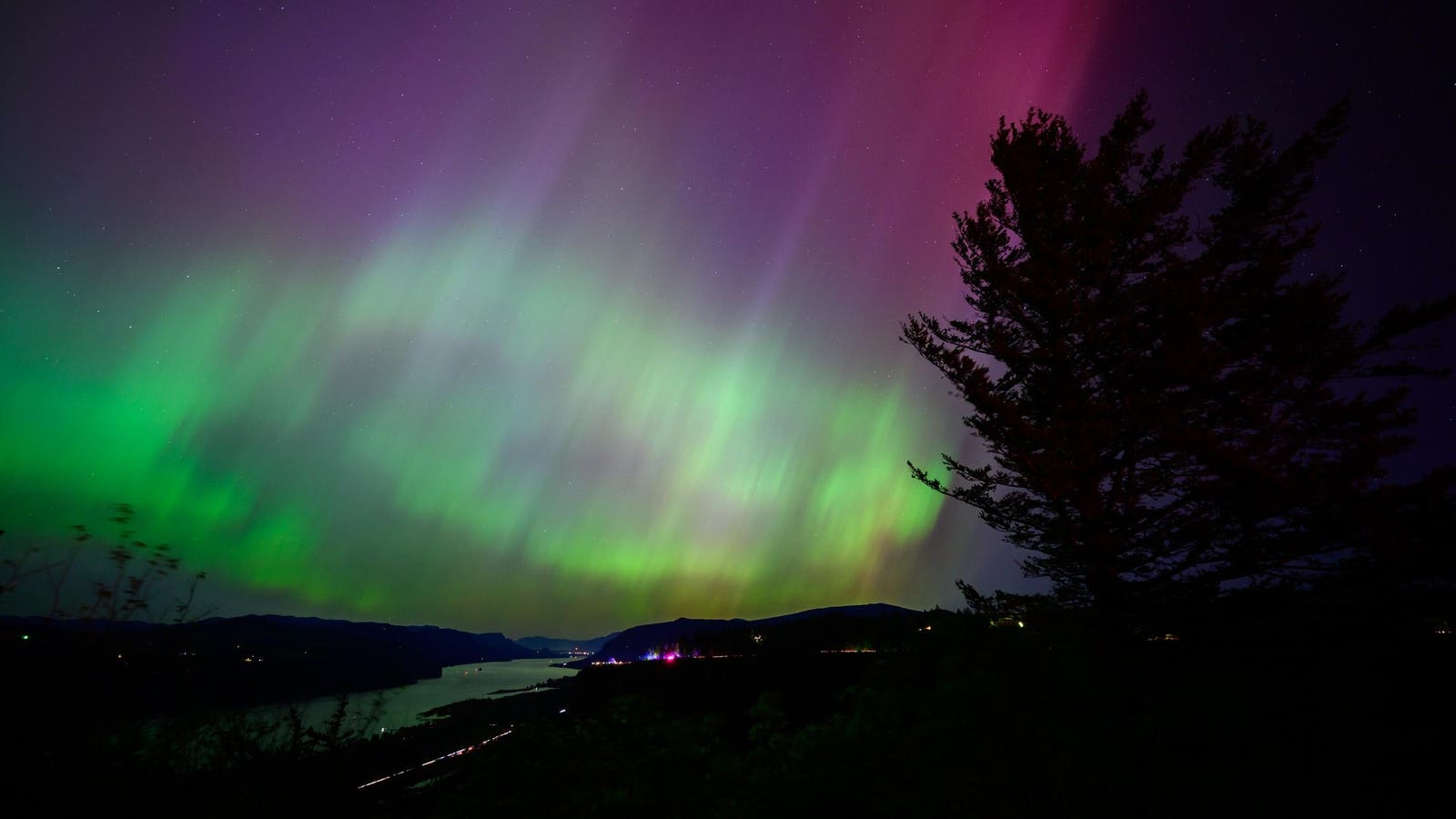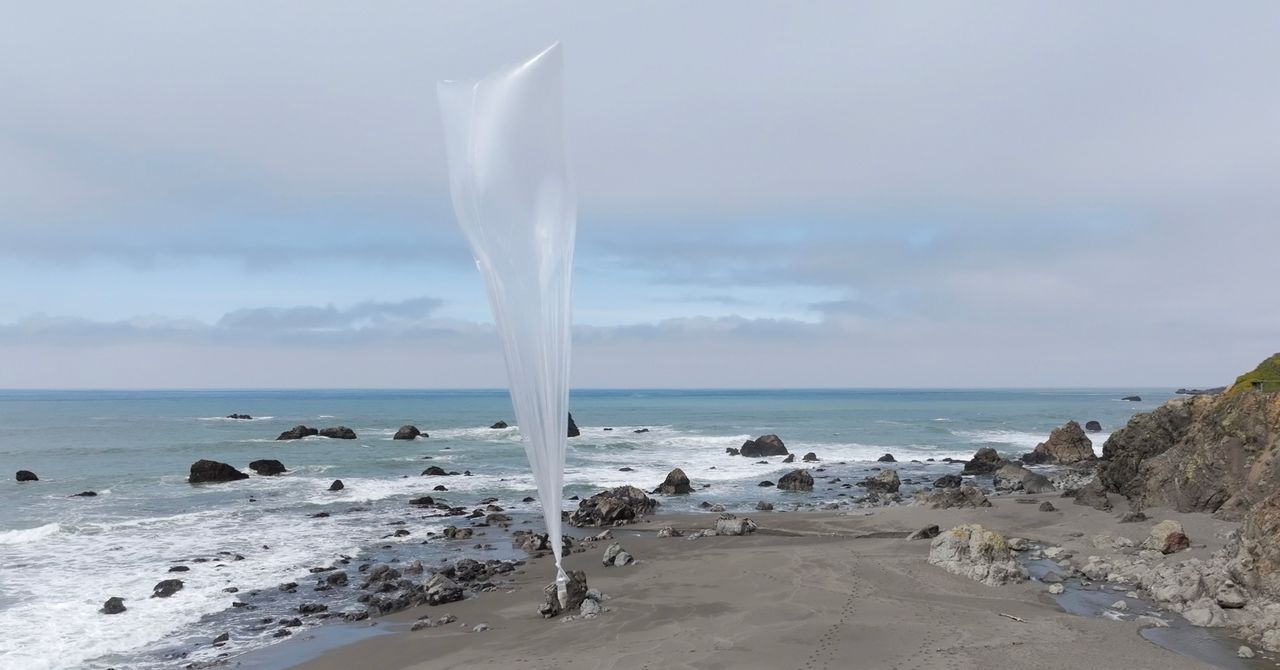The Northern Lights are seen above the Columbia River Gorge from Chanticleer Point Lookout in the early morning hours of May 11, 2024 in Latourell, Oregon. (Photo by Mathieu Lewis-Rolland/Getty Images)
Getty Images
The Northern Lights may be visible in the U.S. overnight on Monday, Aug. 18 and Tuesday, Aug. 19 after a geomagnetic storm was forecast by the National Oceanic and Atmospheric Administration’s Space Weather Prediction Center. With the moon rising in the early hours this week, the night skies will be dark enough for any auroral activity to be visible on the northern horizon from 10 U.S. states.
Mid-to-late August is considered the beginning of the Northern Lights season in the Northern Hemisphere.
Northern Lights Tonight: When To See Aurora
NOAA’s three-day forecast indicates a minor geomagnetic storm, measured at a value of G1 on a scale of G1 to G5. According to NOAA’s forecast, the Kp index — which provides a rough guide to the intensity of aurora displays — may reach 5.
NOAA’s latest aurora viewline (see below) indicate that aurora displays are a possibility in northern U.S. states and Canada, with 16 U.S. states having a chance from around 10:00 p.m. EDT on Monday, Aug. 18 through until around 4:00 a.m. EDT on Tuesday, Aug. 19.
“Late on 18 Aug, active conditions followed by G1 (Minor) geomagnetic storm levels on 19 Aug are likely, due to the onset of influence from a recurrent, negative polarity CH HSS,” reads an update from NOAA. CH HSS refers to coronal hole high speed streams, which means the solar wind can escape more easily from the sun, and will be fast-moving.
NOAA’s aurora viewline for overnignt on Monday, Aug. 18 through Tuesday, Aug. 19, 2025.
NOAA
Northern Lights Tonight: Where To See Aurora
Parts of U.S. states that could potentially see aurora — if forecasts prove correct — include Alaska, Washington, Idaho, Montana, Wyoming, North Dakota, South Dakota, Minnesota, Wisconsin, Iowa, northern Illinois, Michigan, New York, Vermont, New Hampshire and Maine. Check NOAA’s 30-minute forecast or use the Glendale App for up-to-the-minute forecasts.
This increase is solar activity arrives just as the night skies are getting darker earlier, and for longer periods, at mid-northern latitudes in the Northern Hemisphere. Even the possibility of displays of the aurora borealis in the U.S. is down to the current solar maximum, the peak of an 11-years cycle during which the sun’s magnetic activity waxes and wanes.
Having probably peaked in late 2024, the sun is now thought to be on the wane, but as well as yet to be proven (there may be a double peak), the finest aurora displays often occur in the few years after solar maximum. Aurora will likely be sighted in the U.S. for a few more years.
Wishing you clear skies and wide eyes.









